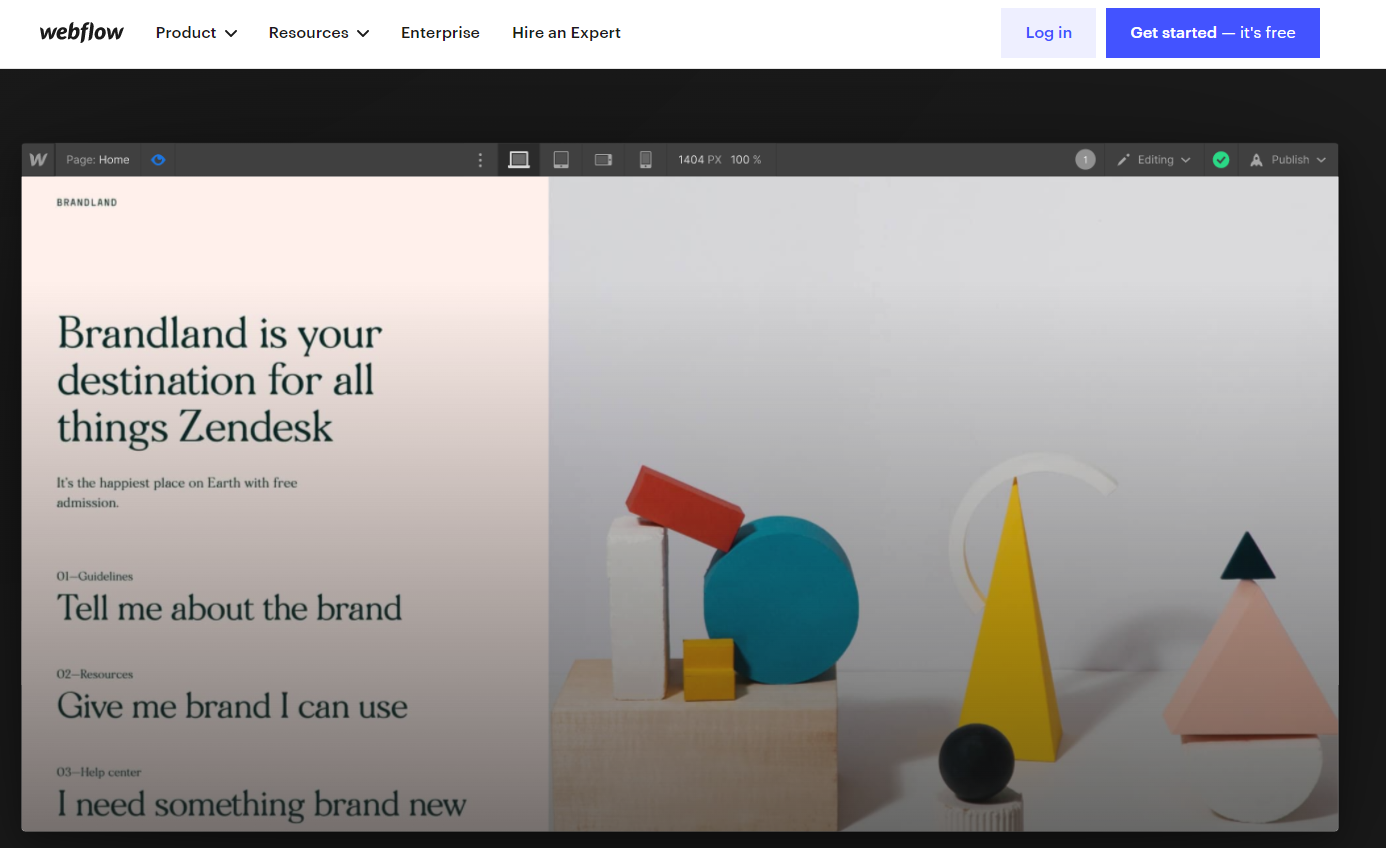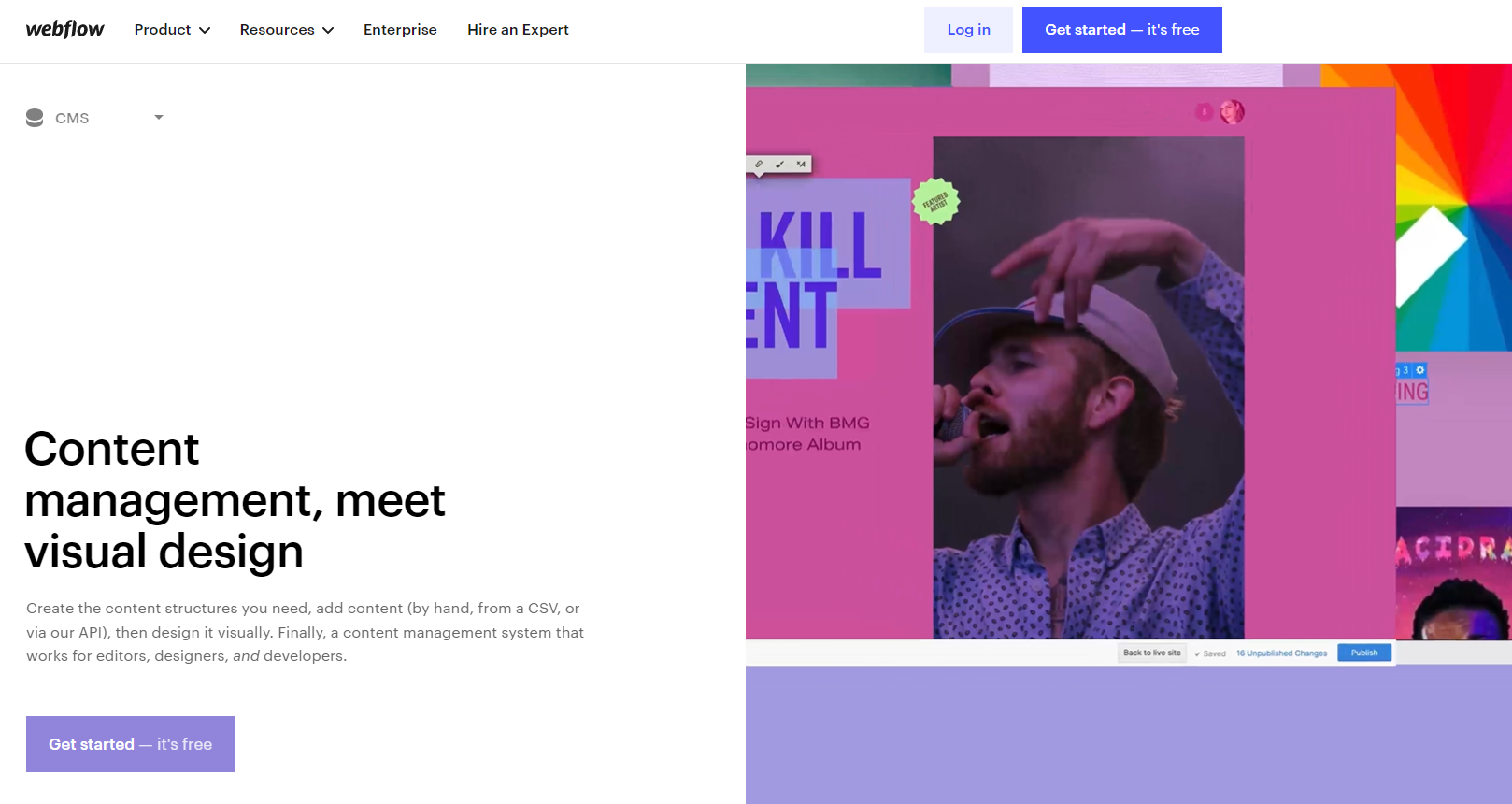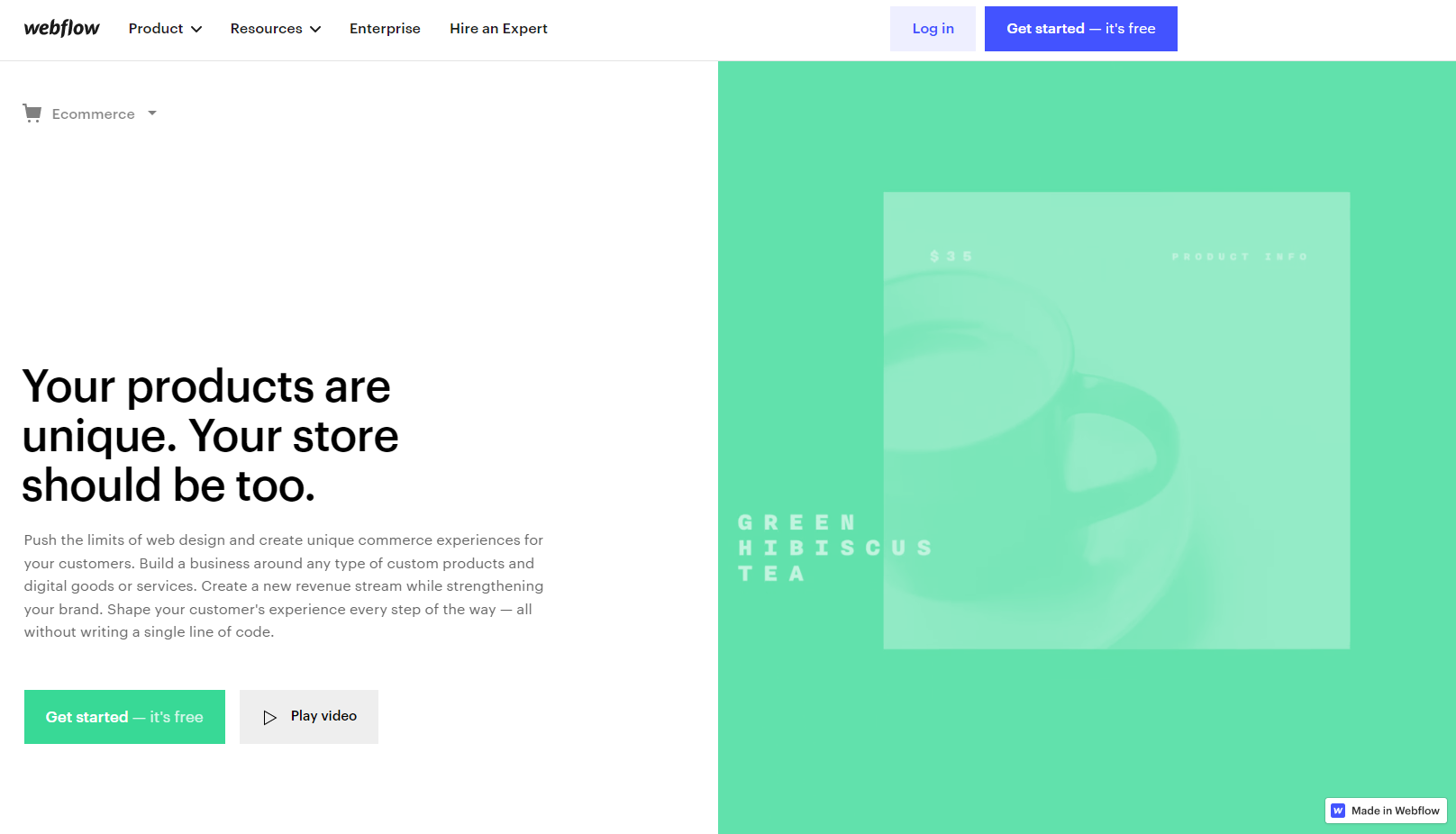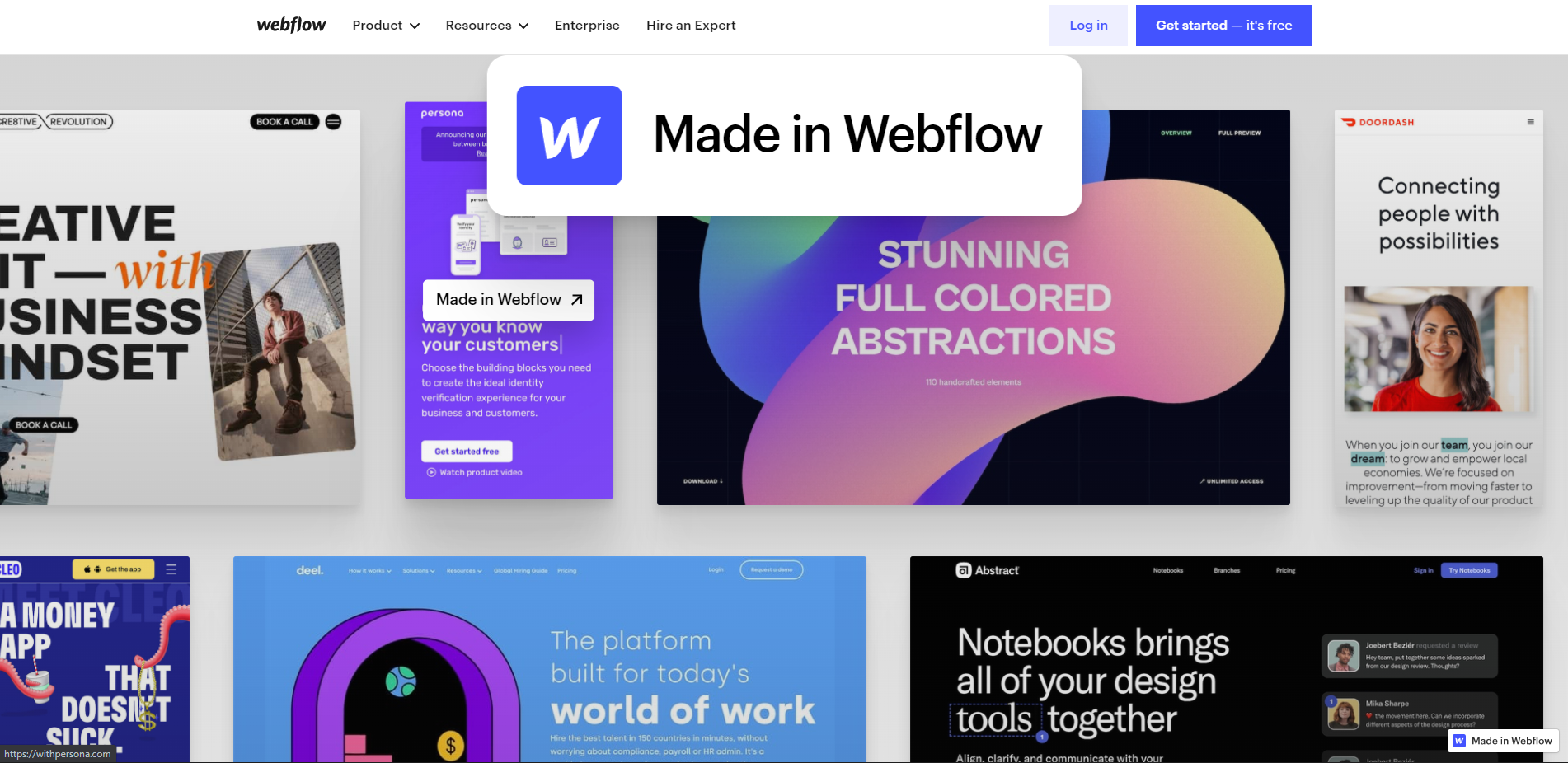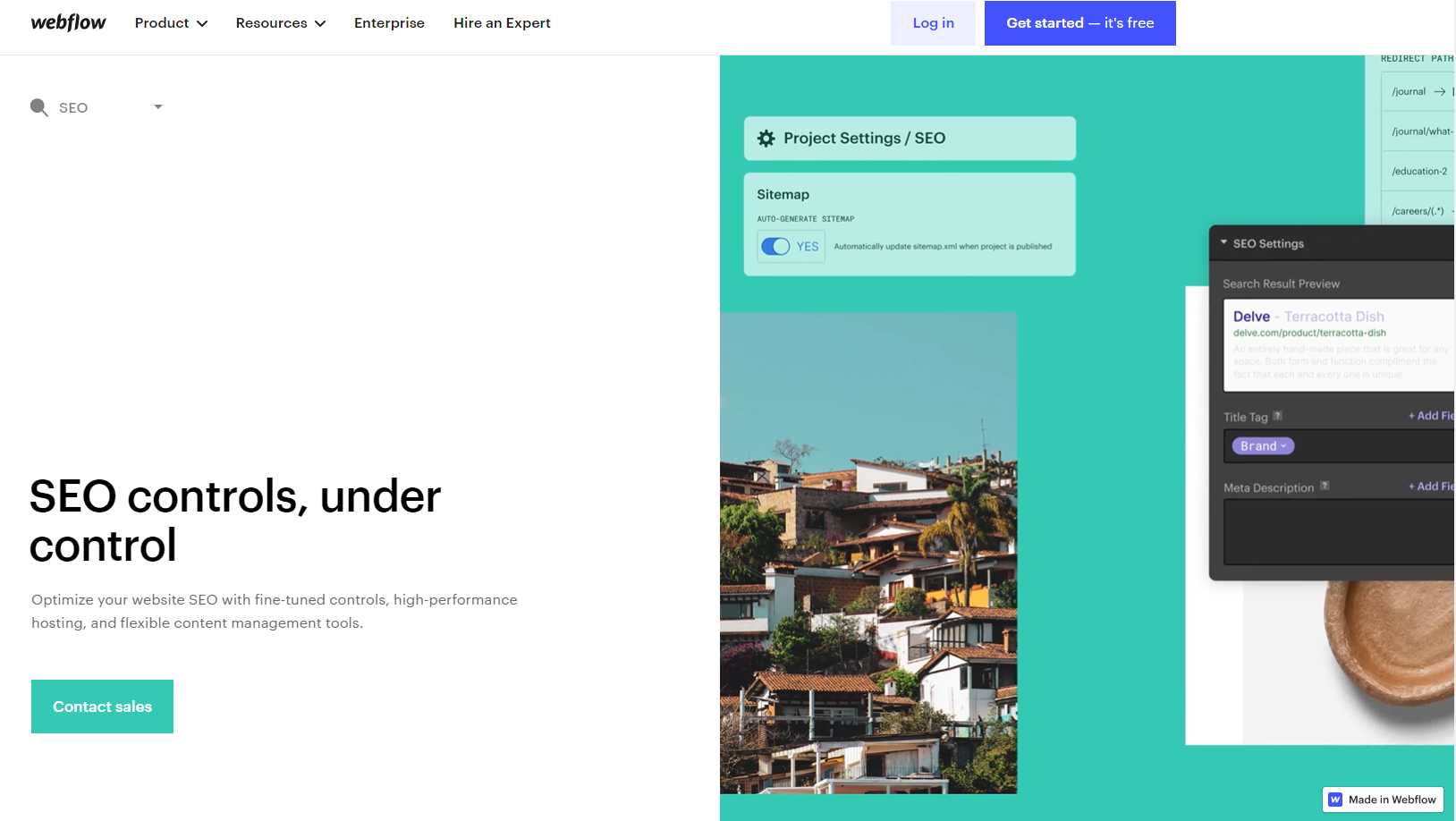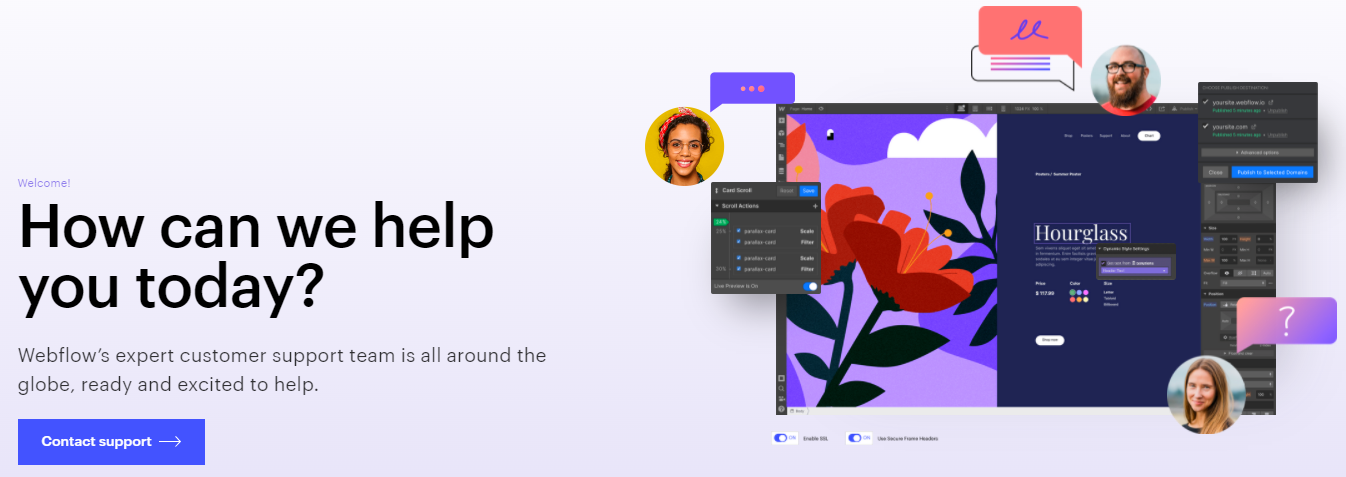OVERALL VERDICT
Out of 10
Pros
- Web hosting is included
- Access to sophisticated SEO tools
- Numerous instructional resources in the form of courses and classes
- Account plans are available for agencies and freelancers
- Each site element is customizable
Cons
- Availability of fewer templates
- Creating a blog seems unnecessarily complicated
This article is based on Webflow Review and if you want to know about this then stay tuned with us till the end.
If you work as a freelance designer or at an agency, you’ve probably heard of Webflow. As a startup incubator Y Combinator graduate, this San Francisco-based business has raised significant capital.
Indeed, they just raised $140 million in Series B investment – on top of a $72 million seed round – enabling them to double its user base to over a million globally.
What distinguishes Webflow from other website builders? While other platforms are more geared toward non-technical consumers, Webflow is somewhat unusual because it offers a solution geared for designers.
They do this via the use of a system capable of converting high-end designs into fully working websites – without the need for any coding. This is why Webflow has often been compared to WordPress throughout the years.
They assert, however, that they have several benefits over them, including more creative flexibility, enhanced site security, and increased simplicity of use. As long-time WordPress users, it piqued our attention – so let’s see whether Webflow is really up to the task.
Webflow Review: Ease of Use
Webflow performs an excellent job of onboarding you as soon as you join up. You may get right into the design process if you’re feeling confident, but we’d suggest Webflow’s tutorial to any first-time users.
After completing the lesson and selecting a template, you’ll access the editor. Do not be worried if you believe your computer has accidentally launched Photoshop — Webflow’s editor merely happens to look very similar.
And, like with Photoshop, there are several design possibilities. While web professionals will feel like they are in a candy store, the general public may be intimidated.
There is a lot to take in, and many functions are not immediately apparent even with the onboarding training. However, as Webflow says, it’s ideal to conceive your website as a collection of boxes.
As Webflow refers to it, ‘The Box Model’ is the process of constructing a box for each element of your site and superimposing them on top of one another.
Your site’s layout comprises image boxes, text boxes, and button boxes. While approaching your website in this manner makes it simpler to imagine what you want, editing may still be challenging.
If you’re new to website construction, we suggest devoting a few hours to familiarizing yourself with Webflow before beginning to create your website.
WebFlow Collaboration Options:
If you collaborate with at least one other person on online projects, the Webflow Teams plan is certainly worth investigating.
It is virtually identical to the Pro individual plan but includes additional collaboration modes and features for a monthly fee of $35 per participant (annual billing).
While the visual Designer environment does not presently offer real-time collaboration, any team member may view and change any component of your Webflow projects at any time.
This is particularly advantageous for cross-functional teams, in which one person is responsible for design and another for content, for example.
Apart from shared access and assets, Webflow Teams has a dedicated team dashboard that consolidates all elements of collaboration into a single, consistent user interface.
Additionally, larger teams may contact Webflow for customized Enterprise pricing packages and savings on hosting upgrades.
Overall, this indicates that Webflow has given careful consideration to the demands of not just its freelance/individual customers but also a more extensive set of small/medium teams and agencies — a wonderful little cherry on top of an already fantastic cake of features and possibilities.
Webflow eCommerce:
The eCommerce version of Webflow is one of the most recent (and most anticipated) additions to the toolkit, bringing exclusive online purchasing features to the tool.
It includes a new range of price options that have everything necessary for projects that sell products online, such as product and inventory management, custom carts, checkout, and other endpoints, complete control over customer emails, and self-hosted checkout.
Webflow eCommerce’s primary value proposition is the ability to completely personalize every aspect of your online shop, from product grids and checkout pages to the appearance of buy alerts.
This is in contrast to the present state of e-commerce website creation technologies such as Shopify, Wix, or even the WooCommerce + WordPress package, where granular management requires substantial work (and technical proficiency).
Additionally, we may anticipate coupon/discount options and subscriptions and digital/downloadable items.
In the long run, the Webflow team wants to expand its eCommerce plans with a slew of sophisticated capabilities, including abandoned order recovery, multi-currency compatibility, Amazon connection, and customer accounts.
As you can see, the latest edition, although no longer in beta, is still a work in progress — if you’re trying to build a complex webshop, Webflow eCommerce is still a little too essential for such extensive applications. Suppose all of the planned capabilities are realized.
In that case, Webflow eCommerce will become a legitimate rival to specialized solutions such as Shopify and Instacart, backed by the Webflow builder, CMS, and hosting.
Template Design Of Webflow:
Webflow offers over 100 templates in total, including 40 free ones. You may sort themes by industry, free/premium status, or eCommerce functionality.
This makes it relatively easy to locate a template that meets your requirements. You may also examine the designs before selecting to see if one enables dynamic content.
All Webflow’s templates are responsive, which means they adjust instantly to various screen sizes based on the device used to browse your site.
Premium templates cost between $19 and $149. Most cost between $49 and $79, which may seem pricey, but as a one-time expense, you should see it as an investment.
Webflow’s templates are typically well-designed, and they can compete with industry leader Squarespace in terms of design quality. They’re simple, quick to load, and completely customized.
Webflow Review: Help and Support
Webflow has one of the most thorough self-help sections of any website builder we’ve encountered. Along with Webflow University, which has curated playlists of videos to view (such as Intro to Design, Web Elements, or SEO Fundamentals), there are also individual courses where you can go deeper into a particular subject.
The Webflow 101 Crash Course and the Ultimate Web Design Course are now available. If digital (or online-based) learning isn’t your thing, you can always download one accessible e-book to study the same material.
The Webflow Community is a public platform where you can crowdsource solutions to your problems and ideas. If you’d like to contact a member of the Webflow team, you may do so using the online contact form Monday through Friday from 6 a.m. to 6 p.m.
Pacific time (UTC-8). Requests for features may be made using the Webflow website’s Wishlist page. While Webflow does not provide consulting services, it does maintain a directory of Webflow Experts that can assist you in getting started.
You may search for freelancers or agencies using a variety of factors, including geography, the sort of support given, the type of project, and the size of the team.
Due to Webflow’s SLA, you may always verify the condition of its systems through its support page.
Webflow Review: Pricing
Pricing is another feature of Webflow that may dissuade some users — it may grow rather pricey!
Because Webflow portrays itself as a more advanced website builder that gives consumers more creative power, its charges are only natural.
The issue is that the ordinary user may not need, want, or understand how to utilize half of the items they are paying for. Webflow offers six price tiers at the moment: three for websites and three for online businesses.
While you may design a website for free, the cheapest way to publish it online is with Webflow’s ‘Basic’ subscription for $12/month. This is appropriate for basic websites that need a few standard features, such as picture galleries, contact forms, or menus.
The CMS plan is geared at blogs and content-driven websites, while the Business plan is, predictably, geared on marketing and scaling.
Webflow’s e-commerce plans vary from selling a few things on the side (Standard plan) to effectively selling in quantity (Plus plan) to marketing and managing your products to a worldwide audience (Global strategy) (Advanced plan).
Additionally, Webflow for Enterprise is accessible on a per-quote basis. This is where Webflow will assist you in building your site and will support you throughout the process.
This is an excellent service. However, it is only appropriate for huge businesses.
FAQs on Webflow Review:
Is Webflow good?
Absolutely. Webflow is an excellent drag-and-drop tool for creating dynamic web pages. If you're a designer looking for more flexibility in creating distinctive layouts without code, Webflow is your best choice. If you're a developer, Webflow is an excellent tool for prototyping.
Is Webflow worth the cost?
If you collaborate with at least one other person on online projects, the Webflow Teams plan is certainly worth investigating. It is virtually identical to the Pro individual plan but includes additional collaboration modes and features for a monthly fee of $35 per participant (annual billing).
Is Webflow or WordPress better?
Both WordPress and Webflow are fantastic options for website development. Which tool you use is ultimately determined by the features you want in a content management system. For most people and organizations interested in creating a website, WordPress is arguably the superior option due to its greater flexibility and integration with more technologies.
Is Webflow the best website builder?
Webflow is a drag-and-drop website builder that is simple to use and highly customizable. Wix and Weebly both have a limit on the number of adjustments you can make — other site builders do as well; it's the price of not having to develop a website! Webflow's site builder is one of the most configurable on the market.
Quick Links :
Conclusion: Webflow Review 2025
Offering the best of both worlds, it’s excellent for people seeking more personalization possibilities than those offered by Wix and Weebly.
And, despite its feature set, we believe it is a more straightforward solution than WordPress because updates are handled using a visual editor rather than via code.
Where do they need to improve? We’d want to see more out-of-the-box capabilities, such as multilingual webpages and user logins, added.
Additionally, their price structure might be made a bit more transparent.
Thus, although we believe that WordPress’s seemingly infinite number of themes and plugins will never be surpassed, we think that Webflow provides a streamlined but powerful alternative – and some very stiff competition.

